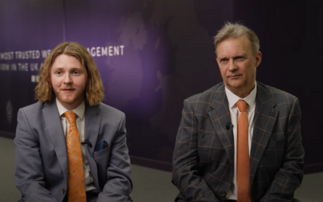Partner Insight: As monetary policy begins to diverge, Michael Costa, assistant portfolio manager at Fidelity International, explains why having a proper allocation to alternative assets is becoming more important
Alternatives encompass a wide variety of investments, including everything from real assets like farmland to listed infrastructure funds or open-ended hedge fund strategies.
While alternative assets such as listed infrastructure have dominated the conversation over the past few years, I expect open-ended strategies like long/short equity funds and global macro strategies to become more central to investor thinking in the future. This is partly down to economic conditions. We are seeing greater dispersion in both stock and asset class performance, effectively meaning that active management may be better rewarded. Simply put, the scope for open-ended outperformance is greater. This environment should continue, particularly as monetary policy begins to diverge more meaningfully over the next few years and volatility picks up from today's depressed levels.
The gradual unwinding of quantitative easing means investors are running higher risks across a broader range of asset classes than would normally be the case. This makes the traditional role of alternatives as a source of diversification more important. Elevated valuations across equity and fixed income markets mean returns from alternatives are looking more attractive in an absolute sense as well. Alternatives are not risk-free or even necessarily low risk, but they do tend to present different types of risk, and that is the key. Even when things in the alternative space go wrong, they tend to do so at times when at least some other assets are doing well. These alternative assets and investment strategies will play an important role in investor portfolios for the foreseeable future.
Click here to read the full article and explore which alternative funds Fidelity International's Multi Asset team is using in their portfolios.













